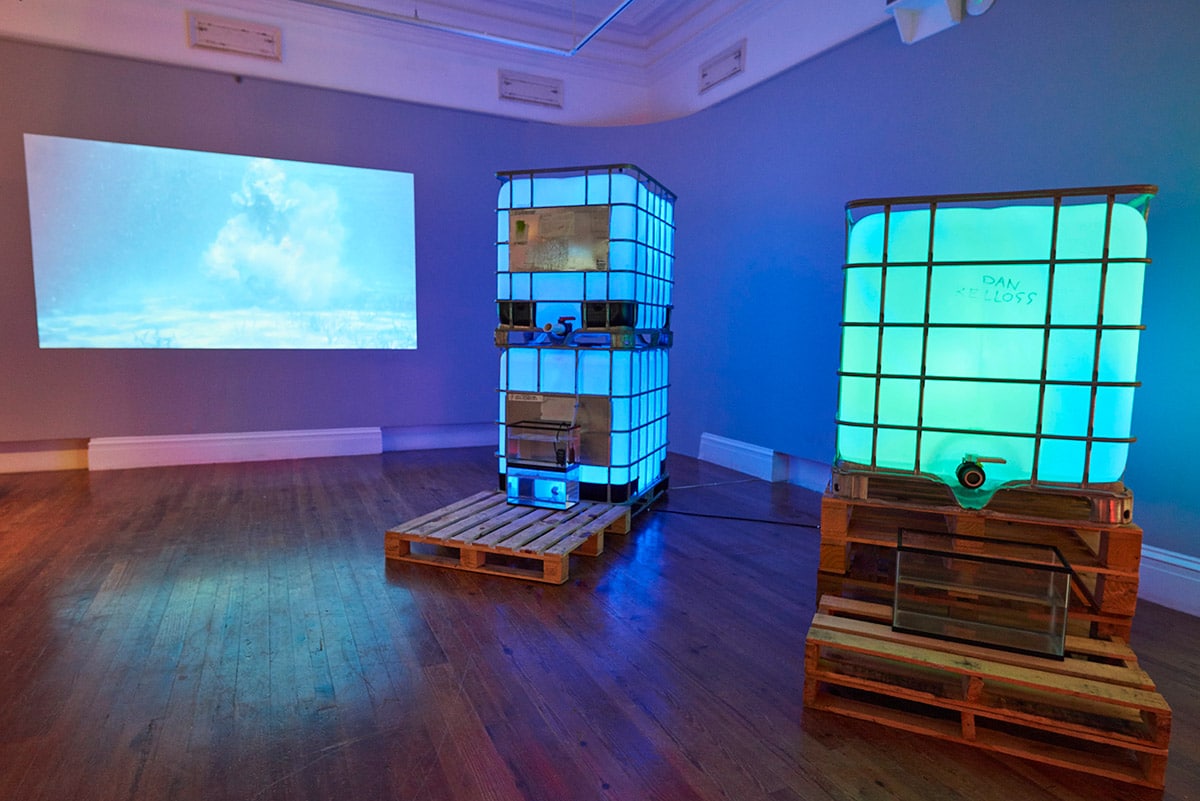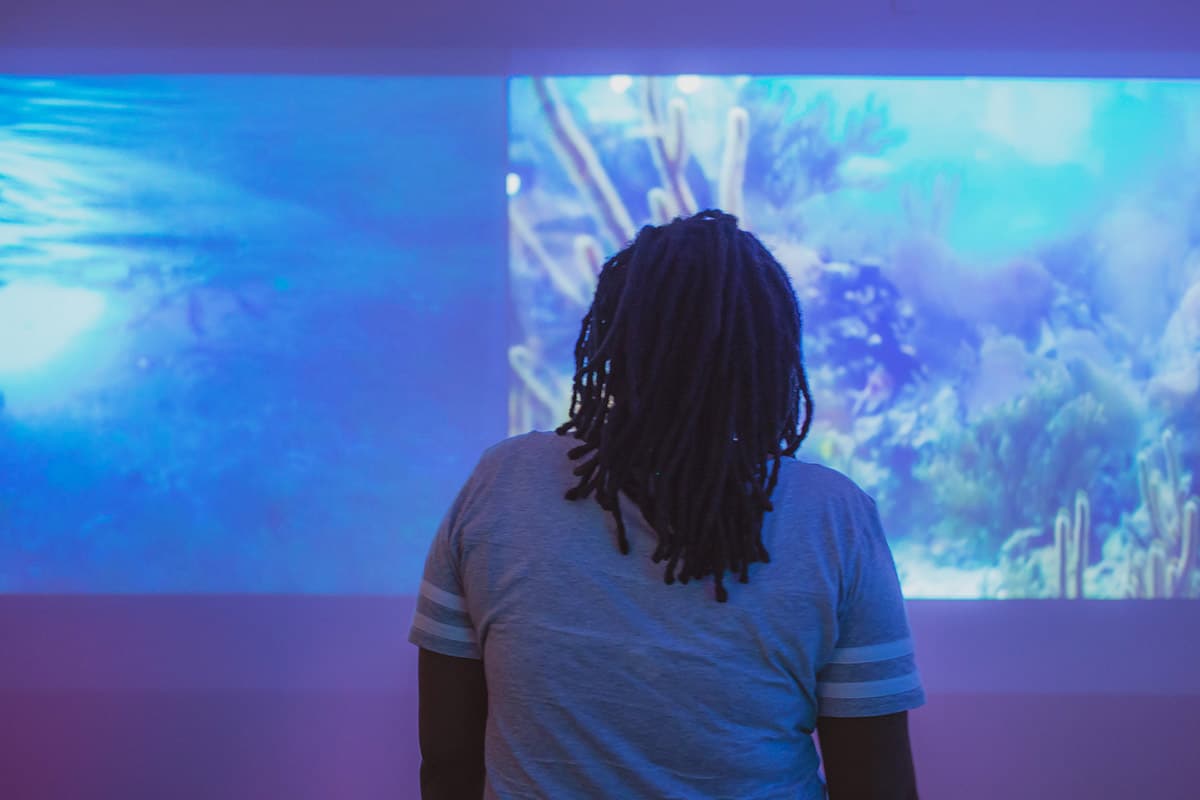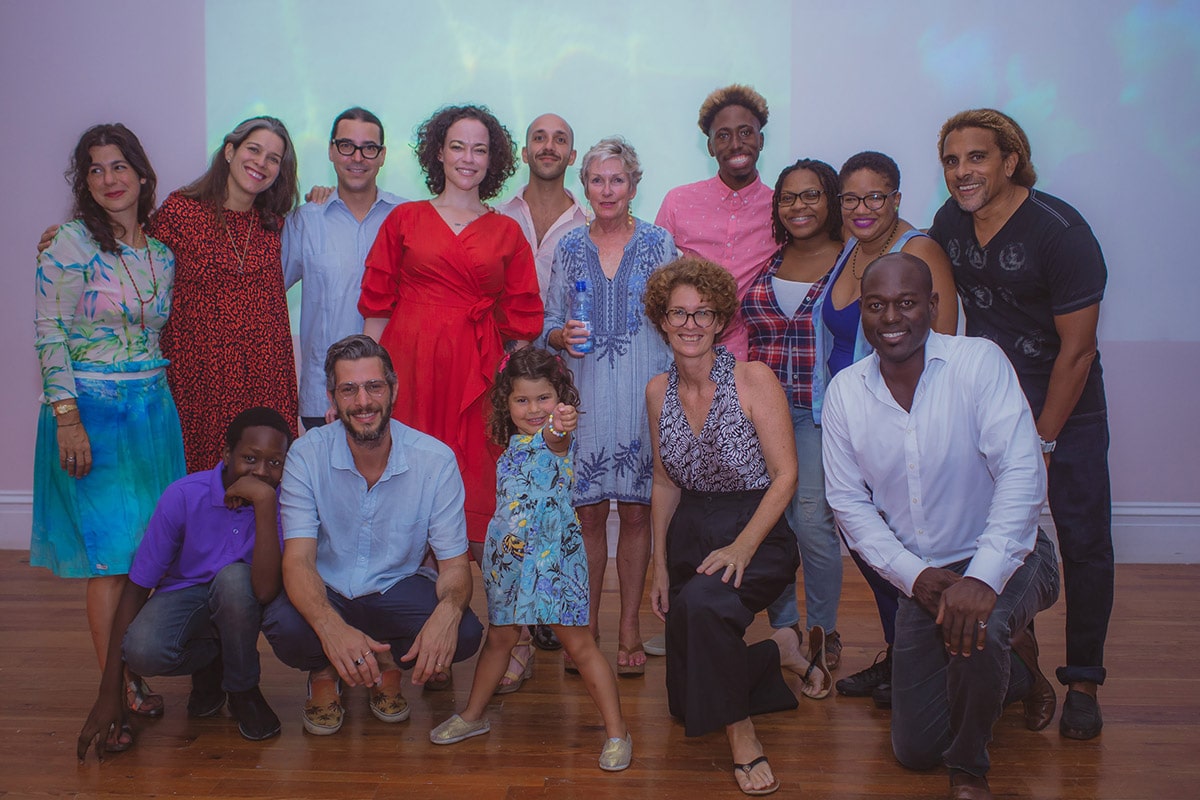
By Dr Ian Bethell-Bennett
The University of The Bahamas
Art and design, though they seem to make strange bedfellows, work hand in glove, and, along with literature, carve out space for exceptional spatial and design shifts that move people into new possibilities.
The 2018 iteration of the annual regional collaborative project “Double Dutch” titled “Hot Water,” combines the work of Plastico Fantastico (PF) and Expo 2020 team from University of The Bahamas. The teams spent a week travelling to and from Ragged Island researching what it might look like to rebuild in stronger and more resilient ways in the wake of Hurricane Irma. The project combined students and faculty, as well as members from PF and we interviewed committee and community members and spent hours and then days creating and distilling ideas for the exhibition. What finally stands in the Ballroom of the National Art Gallery of The Bahamas (NAGB) is weeks of contact and ideation, with that, a lot of experimentation to see how best to construct and meet new demands.

Expected Time of Arrival, 6:30, 2018. Expo 2020. Part of Double Dutch “Hot Water”, on view at the NAGB through Sunday, October 21st, 2018 at 5 p.m. Image by Dante Carrer
The need for water was a striking reality as the Ragged Island community were unable to gain much traction with their rebuilding efforts as they had an extremely limited amount of freshwater. In order to rebuild, fresh water is essential. For all aspects of life, fresh water is essential. So the metaphor of salt and sand, combined with water—green/blue economy were powerful metaphors of development and historical reality and retention.
One way we thought to redesign construction that would couple old practices with new developments so that the new buildback could be more culturally sensitive and space specific, is to engage with those involved. One of the concerns with recent developments has been the greening of the islands, which usually means displacing island communities and cultures and replacing them with high-end green communities that are sponsored by international development, but with no local voices or visions. So, this project encapsulates and explodes concepts that allow people, not businesses to reside where people have always lived.
Estimated Time of Arrival (ETA) 6:30 is a build up and out of the basic yet essential needs of life, water, with the usual, spatial specific but also universal water containers that function to save and deliver water to residents so that they can survive and rebuild. The blue and green lights and the closed circuit water circulation speak to balance and sustainability, cultural retention and historical credibility. The age-old question is then, how do we balance sustainability, local investment with international development and reflection combined with political activism towards a very quiet resistance?

From the opening of “Hot Water”. Image by Jackson Petit
While the water for life stands at one end of the room, the four TV monitors on the eastern facing Ballroom walls replaying the storms that every few weeks or days remind us of our temporary nature, our transience, but for the will of something greater. The noise, the lights the images, the constant recollection of hurricane, barometric pressure dropping, the scare of rising winds that have striped and removed trees, roofs and hills, leave round buildings in tact, but destroy square and rectangular homes that have been built to last but not to fight against tornados and winds of a barrelling category 5 hurricane.
Do we need to rebuild in pods? Should we all abandon our square cement homes for pod-like buildings with smaller windows but solar and wind powered ingenuity? Is this the new way to build? What does it mean that we could be climate refugees if this trend continues? What does it mean that tidal action could empty the sea and then flow back in with such a mighty sweep that it eradicates all forms of life and leaves only a tangled memory of us where there is no sign of life? The sea has been sucked up and sucked out by hurricanes and storms, it has returned with brutal force as it did in Eleuthera during Hurricane Andrew in 1992. Our memories, as Guyanese author, Grace Nichols says, are like “long memoried women.” How do we combine life on islands with this constant threat of climatic nightmares and Sci-Fi/apocalyptic devastation?
The palettes under the water tanks that lift Expected Time of Arrival, 6:30 speak to a utilitarian aspect of life that we forget as we become consumed by consumption, the glitz and bling of Hollywood-style excess in island paradises. The need to basically provide for our needs without the fussiness of anything other than our essentials is loud and clear. The conflux of monitors with weather forecasts, backcasts of what has already happened, much like the circularity of time in Gabriel García Márquez’s One Hundred Years of Solitude (1967) means that we must learn from the past in order to live in the present and to design a brighter better future.

Members of Expo 2020 and Plastico Fantastico with NAGB team. Image by Jackson Petit
Perhaps young Bahamians have become the Melquiades that can survive one hundred years while always remember our roots. The process of design must always be locally interpreted and based, but it should also have that edge of other worldliness and innovation that is seen in blue-green technology. As the fictional town in the novel, Macondo suffers the slings and arrows of outrageous fortune and attempts to take arms against a sea of troubles/struggles and by opposing end them, we understand that design must always change.
The old ways are excellent for this because they have sent us time-honoured messages with new and stronger materials that can withstand the ferocity of those struggles that have never before been seen. The monitors capture the old, that rewrites the stories of weather threats, and conflates it with new, the reality of climatic nightmares and tsunami threats that surge through villages and kill lives, but we must be ready.
As Ragged Island recovers from the devastating Irma, the reality of new needs and demands for ideation is clear. Where José Arcadio Segundo–the protagonist of 100 Years of Solitude– understands that he has been witness to a massacre, but no one else remembers because the government has washed away those traces of ancestral memory through miseducation, we can look to this as a model and build national resilience with buttressed assistance from beyond our shores. It will never be like the movies where we can emerge unscathed or avoid the devastation, but if we can rebuild and recover in a sorter space of time and not be totally distressed, then the potential for design development is positive.
This project is only a metonym for the change that we wish to see in our lives as we build back stronger and remember to bring our stories and memories with us on our journey. Life is a journey and we are always in a state of flux. We must decide to make this flux positive and to not be overtaken by the one hundred years of moss and damp, where ideation and design thinking have landed on the outdated world of plans put on shelves by old governments unable to think outside of their corners.
“Hot Water” will close at 5 p.m. this Sunday, October 21st, 2018. .-From noon, however, you can visit this exhibition free of charge as part of our “Free Sundays” initiative for locals and residents at the NAGB so don’t miss your last chance to see this exhibition before we change over for more great programming for you.